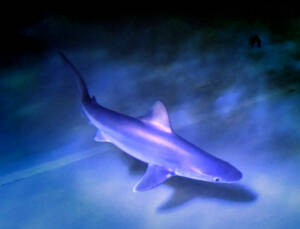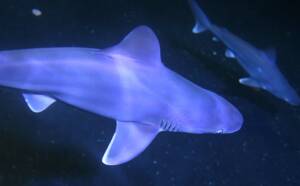Once again, Loro Parque, the world’s best zoo according to TripAdvisor, is proud to witness the progress of the animals that inhabit it. On this occasion, the Parque is celebrating the birth of new young Sandbar Sharks, which have been received with great joy by the Aquarium team. Castiñeiras, a first-time Mum, and Gara, a seasoned second-timer (her first offspring were born in 2016) both of whom now live in Poema del Mar – have become mothers. The babies are another example of what has been achieved at this wildlife conservation centre for this species of shark and are a sure sign of animal welfare. The latter is the main reason why the births are considered a success.
The Sandbar Shark, or Carcharhinus plumbeus, is a species that, according to the International Union for the Conservation of Nature (IUCN) and its list of endangered animals, is in a state of vulnerability worldwide. The Sandbar Shark is not very fertile and therefore overfishing poses a risk to the species. It’s also valuable within the shark fishery industry, as it’s one of the largest coastal sharks in the world. Females can reach between two and 2.5 metres in length and males can reach almost two metres.
These animals are quite long-lived, as they can live up to 45 years. They reproduce only once every two years and the gestation period is between eight and 12 months. Another distinctive feature is that they are ovoviviparous; the embryo develops inside an egg but, at a given moment, it’s released from the egg inside the mother’s womb and, when it is born, the baby’s body comes out. Its name derives from the Greek karcharos, meaning sharp’ and rhinos, meaning nose – that is, sharp-nosed fish. Plumbeus is Latin for lead, a nod to the grey colour of the animal.
The team of professionals in this area has put all its effort into taking care of every detail throughout the process which finally has reaped its rewards. The recreation of natural light during the day, moonlight during the night, the adaptation of the water temperature according to the seasons, the control of food and even the night watches during childbirth are just some examples of the work that has been carried out. Later on, the training phase will be started, so that when they are handled for weighing, measuring or clinical testing, they can do so voluntarily and without undergoing any kind of stress. Throughout the entire process, the team gets to know each individual closely and claims that, like every animal, each has its own personality.
Thus Loro Parque reinforces its work with programmes for the protection and reproduction of endangered species. And, in addition, through these ambassadors of their counterparts in the wild, they want to underline the beauty of this animal and raise awareness about the condition in nature of all sharks in general, since the list of endangered species includes 11 species of sharks, and it is estimated that 100 million die each year as a result of human consumption. That is why the work of wildlife conservation centres, such as Loro Parque, is very important because if we do not change this situation, after 400 million years of inhabiting the Earth, they are facing certain extinction.















